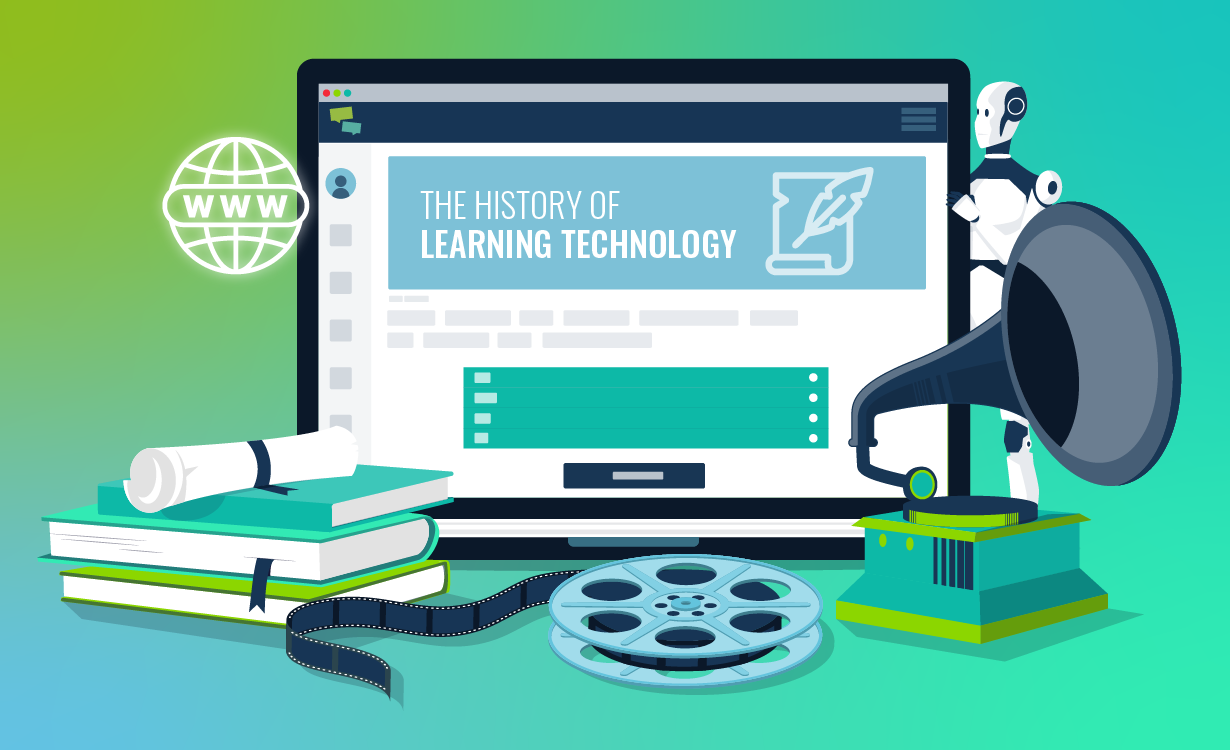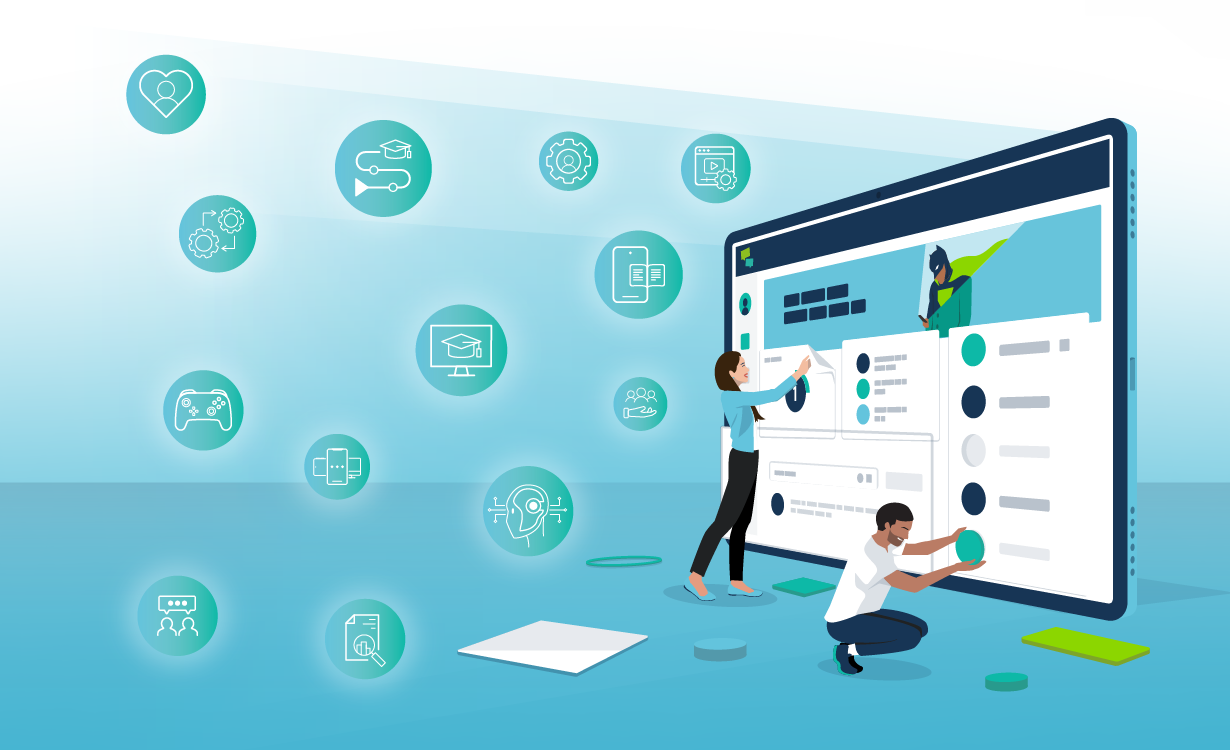The world is becoming increasingly technologically driven. And as a result, traditional learning is moving towards a more participatory environment. After all, immersive learning comes loaded with benefits.
The rapid pace of technological advancements offers a huge potential for organisations to harness the capabilities of immersive learning. Indeed, immersive technologies are projected to reshape every aspect of our lives, including the L&D landscape.
With our business and personal lives moving to increasingly digital environments, it only makes sense that education has followed and migrated to a more technologically focused model.
So, let’s explore how immersive technology will revolutionise learning technology and the L&D environment!
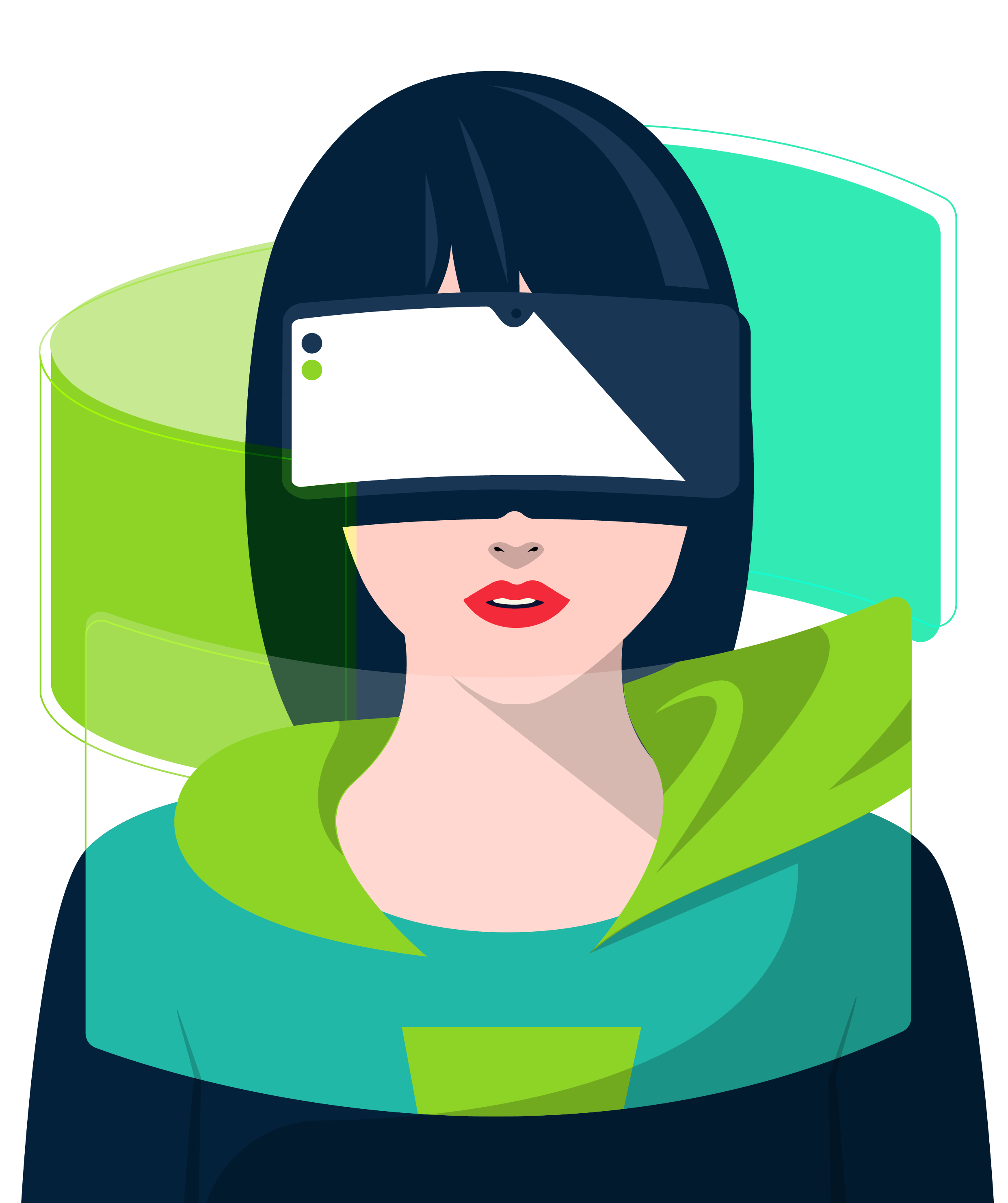
Immersive Learning Technology
Immersive technology, often referred to as extended reality, is an umbrella term for all technology that has the capability to integrate the real and virtual world. Today, we focus on the most commonly known immersive technologies: virtual reality and augmented reality.
In 2020, the immersive training market was valued at $26 billion. And the overall immersive technology market size is expected to reach nearly $300 billion by 2024. The growth has been remarkable!
In fact, immersive learning and technology are hot topics, and there’s little chance of this growth slowing down any time soon! As a result, immersive technologies are expected to impact every aspect of our lives, transforming how we live, work and learn.
According to PwC analysis, virtual reality and augmented reality have the potential to boost the global economy by £1.4 trillion by 2030. Augmented reality is forecasted to provide the biggest benefits to global GDP, accounting for £985 million of that total.
And did you know, 52.1 million people in the US now use immersive technology at least once a month, compared to 43.1 million in 2019? It is safe to say that immersive technology is here to stay!
But how does this impact learning? These digitally created environments replicate real-life scenarios accurately. And as a result, learners no longer have to be passive spectators. And as the technology evolves, we can discover increasingly impressive ways to connect people and machines.
Before exploring how immersive technology can revolutionise learning, let’s explore the different types in more detail.
Virtual Reality
Virtual reality (VR) is perhaps the most widely known immersive technology. In fact, medical professionals and engineers have used VR since the 1990s. And it has only grown since! According to Grand View Research, the VR sector is expected to grow at an average of 21.6% every year between 2020 and 2027.
VR is unique in its ability to combine what we know with what we can envision. In fact, VR is able to immerse learners in alternative digital environments. This experience happens in a fully artificial environment, which feels and looks like the real or an imagined world.
The digitalised environment uses special equipment to display the world. Most often, individuals access content through VR headsets or head-mounted displays. This can be combined with headphones and hand controllers for the ultimate user experience.
Big organisations are piloting using VR in their consumer operations, and IKEA was one of the frontrunners. In 2016, they developed an app that enables consumers to explore their virtual kitchen environments through HTC Vive headsets.
Ever since VR boomed, people have tried to find more ways to use it. After all, virtual reality provides the option to immerse workers, consumers and learners in environments that are hard to reproduce otherwise.
This fully immersive digital landscape helps trick learners’ senses into thinking they are in a different environment or world. Learners can then interact with what they see as if they were really there. As such, VR can transform the way learners receive education or training content.
Augmented Reality
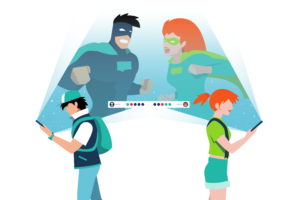
Augmented reality (AR) enhances the real world by adding digital objects or content to the real-world environment. These digital objects can take many shapes and forms, ranging from images and videos to flat 2D assets and more complex 3D assets.
Users can interact directly with their environments while following along with instructions or visual aids. As such, the real world stays in the centre, as it’s only enhanced with digital details.
Pokémon Go is one of the best-known examples of AR. In this game, players explore the real world to discover and collect Pokémon. This record-breaking game still has millions of active users around the world, years after its launch.
Users can experience augmented reality with portable devices like mobile phones, tablets and smart glasses. This makes it a more accessible immersive experience. As a result, AR can be extremely useful in training as it allows information to be delivered when and where it’s needed.
In addition, AR can be used to project a layer of educational text and lesson-appropriate content on top of learners’ actual surroundings. This helps to create an interactive and meaningful learning experience.
Can Immersive Technology Revolutionise Learning?
Usually, the first idea that pops into anyone’s mind when they think about immersive technology is something to do with gaming or entertainment. And while AR and VR have historically been dedicated to gaming, their role is changing!
In fact, according to Greenlight VR research, the desire for education now outweighs the desire for gaming content. IDC estimates that the top two commercial use cases for immersive technology will be training ($4.1 billion) and industrial maintenance ($4.1 billion).
And the reasons for that are clear! Organisations have realised the benefits of using augmented and virtual reality in education. After all, interactive learning can be an incredibly effective training method thanks to the hands-on approach.
Your learners can immerse themselves in the experience and stimulate all their senses. This helps the brain to record the activity more accurately leading to higher knowledge retention. In fact, studies have shown that when using immersive technology retention rates can reach an impressive 75%.
Based on that alone, researchers believe augmented and virtual reality to be the future of education. Implementing new technologies will empower learners and educators to explore topics and learn more effectively. AR and VR can bring complex topics to life in new and unparalleled ways.
As a result, educators and L&D professionals can use immersive technologies to enhance engagement. After all, being immersed in what we are learning often motivates us to fully understand the topic. And in addition, It requires less cognitive load to process the information.
Now MarketsandMarkets estimate that AR and VR in education will grow from $9.3 billion in 2018 to $19.6 billion by 2023. We seem to be on the verge of an immersive learning revolution.
But what areas of training will immersive technology revolutionise? Let’s take a look!
1. Space for Collaboration
Here at Growth Engineering, we love social learning. And with good reason! According to the 70:20:10 model, some of the most important knowledge we gain comes through social interaction.
As such, social learning is the perfect way for you to capture your organisational knowledge, improve communication and grow the return on your training investment. It’s safe to say that the benefits are hard to beat!
While immersive technology solutions have historically focused on the individual learner’s experience, they now have the potential to take collaboration to the next level. They allow learners to interact in different ways compared to the traditional classroom or online learning settings.
An immersive collaborative environment offers a shared social place with interactive objects. Learners around the world can gather to share their knowledge. These environments have a huge potential to overcome the obstacles presented by our increasingly distributed teams.
If a task requires teamwork, students can unite together in a virtual environment. This is especially helpful for global teams, as they can get together in the virtual world even if they are in different cities, countries or continents! Using avatars and mapped facial expressions, learners can come together to discuss, synthesise and learn from one another.

In addition, paralinguistics play a big role in how people interact and gather information from others. Some of these gestures, tones or meanings can be lost in online learning environments where learners have less visibility of their peers. Immersive technology lets learners take advantage of these non-verbal cues by providing a digital way of exploring them.
But the benefits go far beyond training and collaborative teamwork! By removing geographical boundaries, VR and AR help learners to understand different cultures and values. This is an important skill in today’s interconnected world.
2. Safe Learning Environment
Practice makes perfect. After all, experience is the key to learning and applying new skills to real-world situations. But providing a safe and effective environment for practising is not always easy through traditional training methods. As a result, learners only get to put what they’ve learned to the test in the real world, where mistakes can be costly.
Luckily, immersive technology is a fantastic tool for shaping a safe learning environment. In fact, when it comes to learning about risky or unstable processes, immersive technology is likely to be your best bet.
As we know, some learning processes are of higher risk. These activities may include, for example, handling heavy machinery, early piloting flight classes or chemical experiments in a laboratory. In an artificial learning environment, students can interact and experiment with these dangerous scenarios without putting themselves or anyone else at risk.
In addition, using a trial and error approach in the real world can sometimes lead to expensive mistakes or unwanted delays. Instead of trying your luck, immersive technology helps you to identify the best processes. Boeing, for example, used virtual reality to determine the best way to prepare for and build their new 737 MAX 10.
3. Learning By Doing
Let’s go back to the 70:20:10 model! According to this model, 70% of what we learn, we learn through experience. Indeed, it’s a well-known fact that people learn best by doing! Unfortunately, traditional classroom-based learning gives few opportunities for this.
Instead, learners focus on exploring theory rather than learning how to put their skills into practice. Luckily, augmented and virtual reality are excellent ways to facilitate a more in-depth, practical learning process.
With immersive technology, learners are inspired to discover for themselves. They can interact with objects, both virtually and physically. As a result, learners have instant access to learning by doing, rather than passively reading or exploring content.
Hands-on experiences come loaded with benefits! In fact, active experimentation is an excellent way to build soft skills and improve operational knowledge. What’s more, by stimulating an emotional response, hands-on activities have the power to make your training more memorable.
Immersive technology also enables easy repetition. Learners can repeat any scenario as many times as necessary for them to master the required skill. In addition, their learning activities receive immediate feedback. This helps learners analyse whether they are moving in the right direction.
4. Personalised Activities
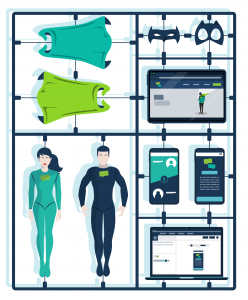
With immersive technology, you can engage a much broader range of students. And more importantly, you can allow each learner to learn in the way most comfortable and meaningful to them.
After all, the beauty of immersive technology is that you can customise the learning experience and offer scenarios tailored to the needs of your business or individual learners. This makes your training more valuable and helps to boost your intellectual capital.
AR and VR can bring complex topics to life and make them easier to comprehend. For example, replicating anatomical models can help learners to overcome the limitations of flatter 2D images. These more detailed models provide scope for deeper exploration. As a result, each learner can explore the exact part of the model they struggle to understand.
In addition, with immersive learning activities, learners can actually see the things they are learning about. This makes topics easier to understand. And if your learner is struggling with a particular topic or task, it’s easy to teleport them into a different scenario where they can explore a simpler version of the task at hand.
5. Boosted Engagement
Imagine a geography lesson where you can visit any place on the globe. Or an architecture lecture where you can explore the details of the Eiffel Tower right in front of your eyes. This type of experience is much more enriching than just reading about a place. And this contributes to a deeper understanding of the topic.
While travel to these locations might be unfeasible, immersive learning technology helps you to provide real-life experiences without leaving the classroom or comfort of your home.
Simultaneously, immersive training encourages learners to be active and engage with your learning content and process on a new level. This kind of learning experience puts the learner at the core of the process, which helps to eliminate any external distractions.
This contributes to increased learner focus. In fact, PwC have found that individuals demonstrate four times more focus on VR learning than other more traditional learning methods.
Other Current Use Cases
In 2019, a PwC report estimated that 23 million jobs will use AR and VR by 2030. As such, it comes as no surprise that different job roles around the globe already utilise this kind of immersive technology.
While we often tend to think about VR headsets being used for gaming or fun, immersive technology has hundreds or even thousands of practical applications. As a result, organisations are increasingly using the means of augmented and virtual reality to boost their operations.
In the last few years, immersive technology has evolved at pace to better impact real-world applications. Now, it is used in various industries, from education and healthcare to retail, real estate and automotive.
Let’s explore some current use cases for immersive technology!
1. Medical Field
The medical industry is one of the front-runners when it comes to taking advantage of immersive technology. After all, instructors can create anything from virtual operating theatres to anatomy models by using VR and AR.
One of the common use cases for immersive technology in the medical field includes surgery simulators. This gives surgeons a fully immersive experience that replicates a real surgery. For example, haptic technology is used to replicate the feeling of a real human bone, tissue and muscle.
Similarly, veterinary surgeons can use VR training to explore the skeleton and organs of animals in depth. These kinds of innovations allow vets, doctors and surgeons alike to practise their skills in a safe extended reality environment.
This approach can be extremely useful for trainee doctors who can enhance and speed up their learning process through these immersive experiences. Similarly, applying immersive technology helps to show complicated processes like the workings of the human brain. And this helps learners to merge theoretical knowledge and practical lessons.
2. Employee Onboarding
Considering high employee turnover rates, companies are turning their focus to technologies like AR and VR to create rich and immersive employee onboarding experiences.
Immersive technology means that new employees can experience their next role or job site before ever stepping into the new working environment in person. As a result, they can quickly become familiar with their new role. This, in turn, helps to speed up new employees’ time to productivity.
Immersive technology helps new employees understand your company culture, take part in effective training and enhances their knowledge retention. No wonder why several Fortune 500 companies utilise immersive technology for their onboarding!
For instance, Walmart uses virtual reality to train their associates and employees. And based on the improved retention rates and high test scores, Walmart has rolled out the programme to over 4,500 stores.
UPS has also seen success in using VR in their onboarding and training programmes. They use VR headsets to help drivers spot potential hazards when driving on a virtual road. UPS has seen their retention rate climb to 75% after including virtual reality in their training programme.
3. Customer Experience

Did you know that customers are 86% more likely to pay more for a product or service if they receive excellent customer service?
Most organisations are constantly seeking out ways to improve their customer experience. As a result, immersive technology, and especially VR, has taken the customer care industry by storm!
Businesses use VR and AR to bolster new customer connections and enhance their experiences. For example, The North Face uses immersive technology to help customers identify with their brand identity.
But that’s not all! Organisations are increasingly using immersive technology to showcase how their products and services work, look or feel in the real world.
Chinese eCommerce giant Alibaba provide an excellent example of an immersive customer experience! They offer a fully virtual shopping experience. Their customers can choose clothes and accessories and get help from one of their shopping assistants — all by wearing a VR headset.
As this technology evolves, we can expect immersive technology to shape the customer service industry even more. In fact, 84% of stakeholders estimate that virtual reality will surpass in-store customer experience initiatives in the next five years.
Equipment Accessibility
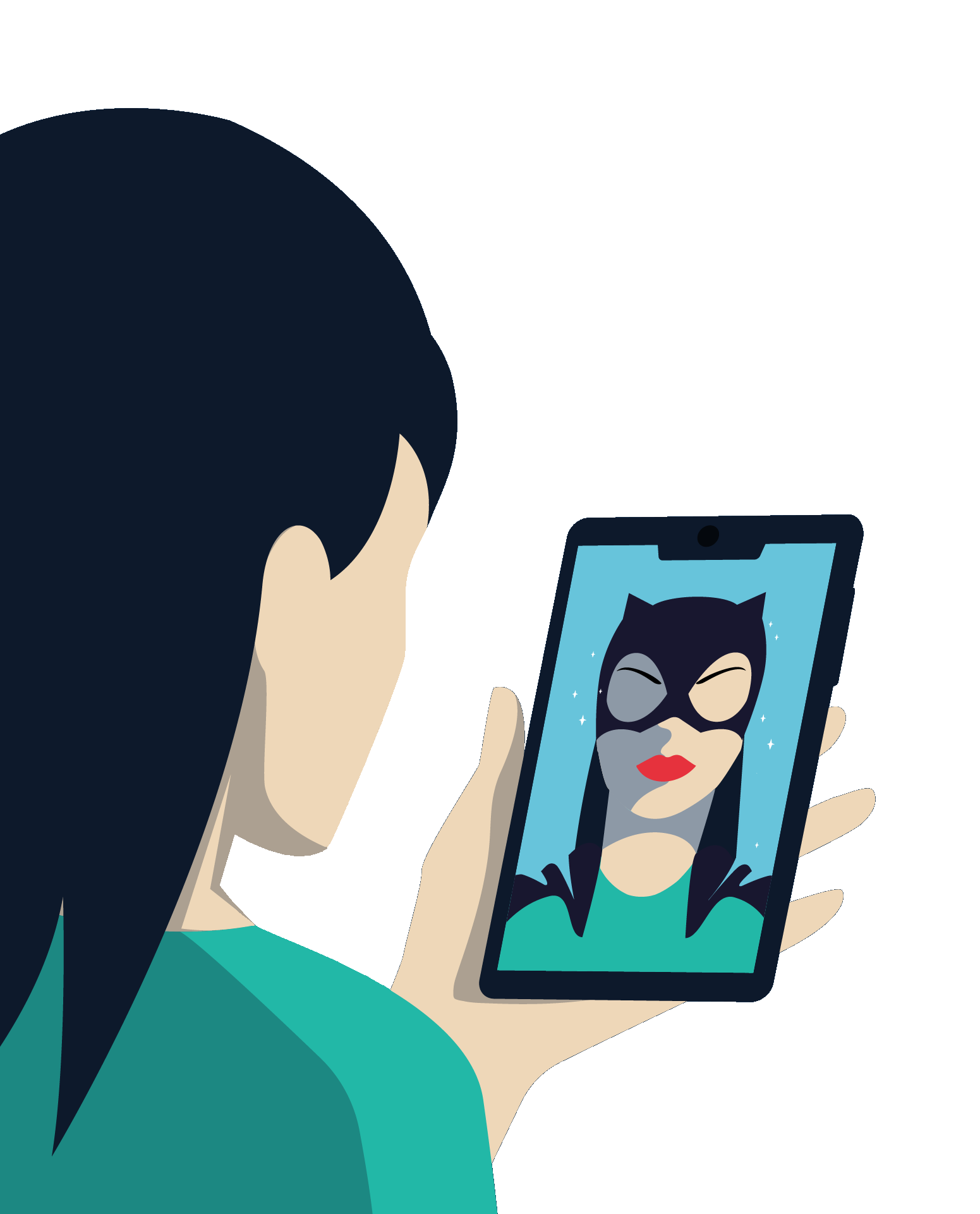
Many companies are put off of immersive technology as they think it’s too expensive and inaccessible. However, there are many different kinds of immersive technology available today.
Our first thought usually focuses on complete specialised headsets or smart glasses. But immersive learning can be just as powerful when accessed via smartphone or computer.
For example, many of us have experienced added layers of immersion through Snapchat and Instagram filters. As such, if your team members have a mobile, they can most likely take advantage of extended reality training. And did you know, nearly 6.4 billion people now own a smartphone?
That’s not to say that there is no initial setup cost related to immersive technology. But luckily, we have seen the prices reducing over time. In addition, VR and AR technology makes it easy and effortless to create additional content down the line. This reduces the relatives costs dramatically.
In fact, a PwC study suggests that immersive technology can actually be a more cost-effective training option than traditional methods. After all, employees complete extended reality programmes four times faster than classroom training activities and 1.5 times faster than eLearning content.
All in all, immersive learning technology is becoming more and more accessible. And this will lead to increased usage of VR and AR in learning and employee training.
Final Words
There you have it! Our guide to immersive technology and its benefits. It’s clear that AR and VR have the power to revolutionise learning by making the learning experience more immersive and engaging.
It transforms learners from passive spectators into active explorers! And that sounds like a worthy goal to us.
If you would like to learn more about immersive learning technology, contact us today! Our engagement experts are always keen to share their expertise with you.


